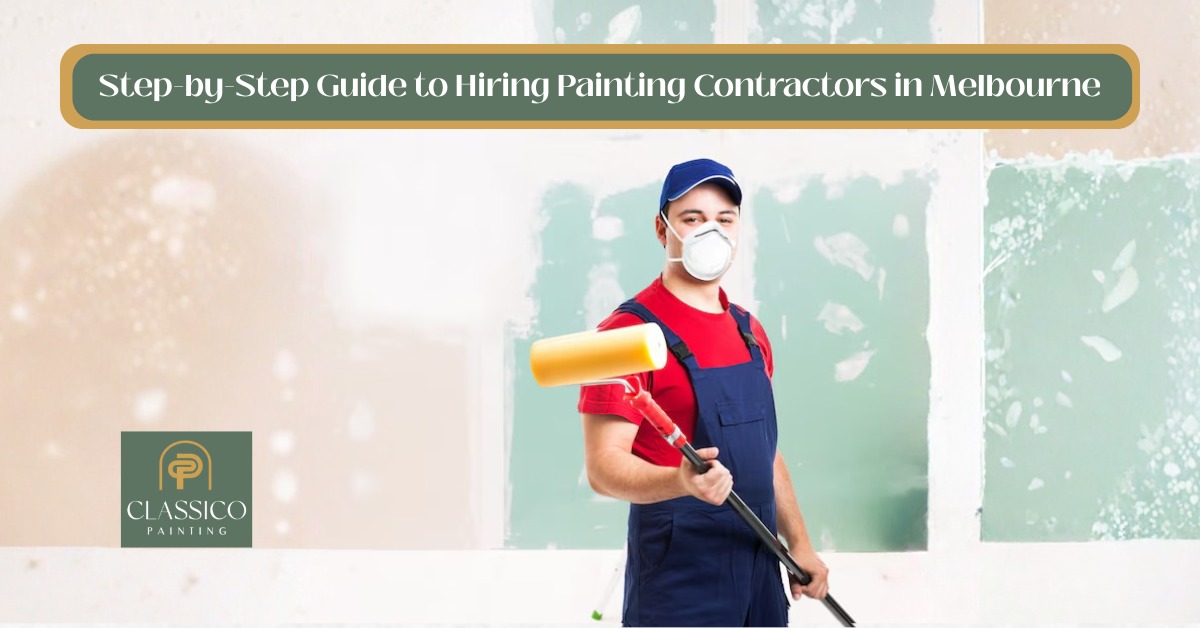You’re ready to give your home a fresh look, but you are deciding between DIY and hiring a professional painter. You’ve got the motivation, but do you have the time, tools and expertise?
Factors like cost, convenience, complexity and experience help you decide whether to roll up your sleeves or call in the professionals.
The cost of painting house interior and exterior will be different too so you’ll learn more about it later in this article.
First, let’s ensure you’re considering 6 factors before you decide to DIY or hire a professional painter.

1. Cost
You’re probably wondering, ‘What’s the cost difference between DIY painting and hiring a professional painter?’ It’s more complex than you think.
Sure, going DIY can save money upfront. But remember, pros know about different types of paints and their applications that can be beneficial in the long run. Cheap paint might peel or fade away quickly; professionals know how to avoid this.
They understand preparation techniques like sanding and priming for a smooth finish. They adhere to safety procedures and use equipment properly, reducing potential harm or damage.
So, whilst you may initially spend more hiring a pro, it could save money by avoiding costly do-overs.
Now, let’s discuss the tools and supplies required for both approaches.
2. Tools and Supplies
When it comes to tools and supplies, it’s essential to realise that they can significantly impact the quality of your paint job. You’ll need more than just a tin of paint and a brush for your DIY paint project. Preparation tools like sandpaper for smoothing surfaces and tape for protecting areas from accidental strokes are essential.
Selecting the correct type of paint for your surface: Water-based paints are great for walls, while oil-based ones work better on trims due to their durability.
Safety should never be compromised in your painting endeavour. Always have protective eyewear, gloves, and a good-quality ladder at hand. With all these tools ready, you’re set to give those pros a run for their money!
But before we dive into painting techniques, let’s discuss the timeframe required for such projects.
3. Timeframe
It’s important to note that the timeframe for a painting project can vary greatly depending on factors such as the size of your space, the type of paint used, and how many coats you plan to apply. If you’re looking at a large area or using oil-based paints, it could be quite a time-consuming job.
Preparation alone can take up valuable time before you even start painting. You’ve got to move furniture, protect floors, patch holes, and sand surfaces. Take advantage of these steps, and you risk an unsatisfactory result.
Remember, too, that specific techniques require more than one coat, lengthening your project’s duration. For all these reasons, some opt to hire a professional painter who brings expertise in efficient methods and safety protocols, ensuring top-notch results within a set timeline.
4. Convenience
Remember the convenience factor, which can be a major deciding point in taking on a painting project. If you’re considering the DIY route, remember it’s not just about applying paint. You need knowledge of different paint types, their applications, preparation techniques, and safety procedures.
Unlike DIY, hiring a professional offers convenient painting. They handle everything: prep work, choosing the right paint for your surfaces, and even cleaning up. Plus, they’ve got the proper equipment and know-how to use it safely.
Sure, it might cost more initially, but think about what your time is worth before you decide to do it yourself. The convenience could make hiring a pro worth every penny.
5. Complexity
You’ve got to remember that painting is more complex than it might seem on those home makeover shows. There’s a degree of complexity involved that you might not anticipate.
Whilst DIY projects can be enjoyable and cost-saving, the intricacies of paint selection, surface preparation, and application techniques can quickly become overwhelming.
Different types of paints have unique uses and properties – emulsion versus oil-based, for example. Then, there are factors like safety procedures and equipment usage to master.
Hiring a professional painter eliminates these complexities by bringing expertise you may need to become more familiar with. It’s not just about brushing on some colour but understanding the science behind it all.
The following section will examine how much experience plays into this decision-making process.
6. Experience
Remember to consider the value of experience when tackling a painting project. You may be inclined towards a DIY approach, but remember, a professional painter has spent years mastering their craft. They know which type of paint is best for each surface and how to apply it for flawless results.
They’ve mastered preparation techniques that ensure paints adhere properly and last longer. Safety isn’t overlooked, either. They’re familiar with the correct use of ladders, scaffolding, and other equipment to prevent accidents.
What’s the Cost of Painting a House Interior?
It’s essential to understand that the cost of painting the house interior can vary greatly depending on factors such as the size of your home, the quality of paint used, and even geographical location.
Hiring professional painters might seem expensive upfront, but they bring expertise in choosing the right type of paint for your home’s interior and applying it correctly. They’re familiar with safety procedures and know how to properly use equipment, which could save you from potential accidents.
Good preparation is vital to a smooth finish, which professionals excel at. So, whilst DIY may seem cheaper initially when you factor in time, materials, and potential mishaps, hiring pros might be more cost-effective overall.
What’s the Cost of Painting a House Exterior?
As with the interior, cost of painting the house exterior can vary due to various factors such as size, paint quality, and location. Choosing the right type of paint for an exterior paint job is crucial.
Acrylic emulsion paints are popular for their durability and ease of application. You’ll also need to consider preparation techniques like scraping off old paint or pressure washing the surfaces.
Safety is paramount when painting your house’s exterior; it often involves working at height using ladders or scaffolding. That’s where hiring a professional painting company can be worth every dollar.
They’re knowledgeable about safety procedures and equipment usage – offering you peace of mind alongside a pristine result.





